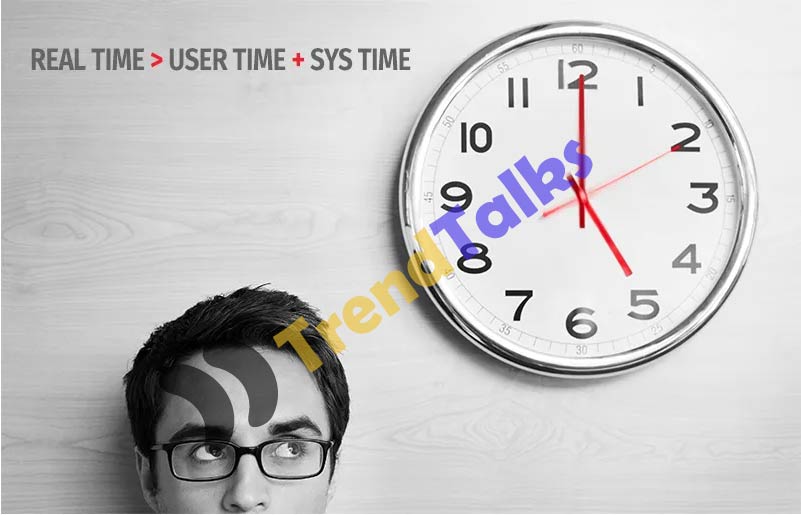Difference Between Clock Time and Real Time – Clock time and real time are concepts that can be easily confused but have distinct meanings, particularly in contexts such as computing, project management, and everyday life. Here’s a detailed table outlining the differences between clock time and real time:
| Aspect | Clock Time | Real Time |
|---|---|---|
| Definition | Measured in hours, minutes, and seconds by a clock | The actual time during which events occur |
| Measurement | Based on standardized time-keeping devices | Based on the sequence of real-world events |
| Usage in Computing | Refers to system time used for scheduling and time-stamping | Refers to the actual processing time of tasks |
| Examples | The clock on the wall shows 3:00 PM | A video game rendering graphics in real time |
| Relevance in Project Management | Used for scheduling meetings and deadlines | Actual time spent on tasks and activities |
| Context in Daily Life | The time shown by your watch or phone | The duration it takes to perform an activity |
| Variability | Fixed and uniform | Can vary based on conditions and context |
| Synchronization | Synchronized with a standard time source | May not be synchronized; depends on real-world events |
| Importance | Important for coordination and planning | Important for understanding actual durations and efficiency |
| Representation | Digital or analog clocks, time schedules | Time taken for activities, live streaming |
| Impact of Delays | Delays are planned against clock time | Delays are experienced in real time |
| Perception | More abstract, based on a set standard | More concrete, experienced directly |
Detailed Explanations
- Definition:
- Clock Time: Refers to the measurement of time using clocks, standardized in hours, minutes, and seconds.
- Real Time: Refers to the actual time duration during which events occur in the real world.
- Measurement:
- Clock Time: Measured by clocks and other time-keeping devices.
- Real Time: Measured by the actual sequence and duration of events.
- Usage in Computing:
- Clock Time: System time used for scheduling processes, time-stamping files, and synchronizing activities.
- Real Time: The actual processing time required to complete tasks, often used in contexts like real-time systems and gaming.
- Examples:
- Clock Time: “The meeting starts at 2:00 PM.”
- Real Time: “The live stream is broadcast in real time.”
- Relevance in Project Management:
- Clock Time: Used to set deadlines and plan schedules.
- Real Time: Used to track the actual time spent on tasks and activities.
- Context in Daily Life:
- Clock Time: The time shown by your watch or phone.
- Real Time: The actual duration it takes to complete an activity, like cooking dinner.
- Variability:
- Clock Time: Fixed and consistent, based on standardized time.
- Real Time: Variable, depending on circumstances and context.
- Synchronization:
- Clock Time: Often synchronized with standard time sources like atomic clocks.
- Real Time: May not be synchronized, as it depends on when events actually happen.
- Importance:
- Clock Time: Crucial for coordination, scheduling, and planning.
- Real Time: Crucial for understanding the actual duration of events and efficiency.
- Representation:
- Clock Time: Represented by digital or analog clocks and time schedules.
- Real Time: Represented by the time taken to perform activities and live streaming.
- Impact of Delays:
- Clock Time: Delays are planned and managed against clock time.
- Real Time: Delays are experienced as they occur in the real world.
- Perception:
- Clock Time: Perceived as an abstract concept based on a set standard.
- Real Time: Perceived directly through actual experiences.
Contextual Examples
- In Computing:
- Clock Time: A scheduled task runs every day at 3:00 PM.
- Real Time: A real-time application processes data and provides immediate output, such as live video streaming.
- In Project Management:
- Clock Time: A project deadline is set for December 31st at 5:00 PM.
- Real Time: The actual time taken by team members to complete various tasks within the project.
- In Daily Life:
- Clock Time: Your alarm is set for 7:00 AM.
- Real Time: The time it actually takes you to get ready for work after waking up.
Understanding these differences is essential for effectively managing time in various contexts, from daily life to complex computing systems and project management.

